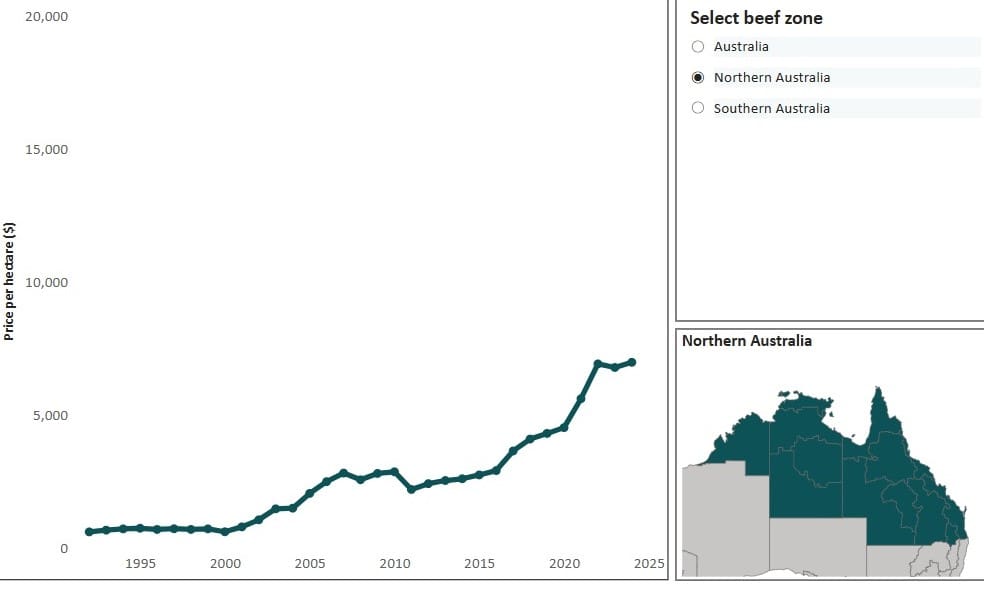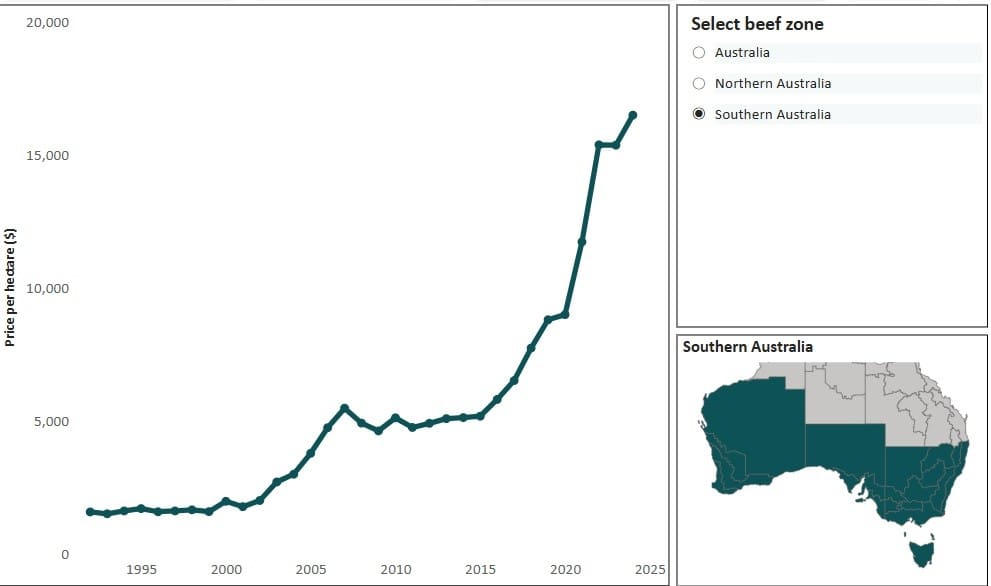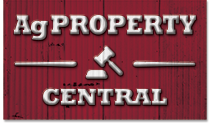BROADACRE and some beef farmland prices across Australia have continued their plateau for a second straight year after decade of strong growth, which had seen many farmland category rates increase by more than ten percent per year on average.
The ABARES Farmland Price Indicator released today reveals that the average price per hectare of national broadacre farmland levelled off in 2024, following a flat result in 2023.
A similar trend is reflected within the beef sector land values nationally, and for the Northern Australia region (Queensland, Northern Territory and the Kimberly region of WA). The average price in Northern Australian beef last year was $6975/ha – similar to 2023 and 2022 (see graph).
Northern Australian beef land price trend $/ha

For southern Australian beef, average prices have continued to rise over the past 12 months, averaging $16,489/ha in 2024 – up another $1130/ha or 7.3pc on the previous year (see graph below).
Southern Australian beef land price trend $/ha

Double-edged sword
ABARES executive director Dr Jared Greenville said farmland prices can be a double-edged sword.

Jared Greenville
“On one hand, higher land prices boost farmer wealth and equity levels. This in turn increases lending capacity and supports productivity growth by allowing farmers to access capital for further investments in land and technology,” Dr Greenville said.
“On the other hand, relatively high land prices may create a barrier to entry and expansion.
“We have seen strong annual growth in the Tasmanian dairy farmland (14.1pc), as well as national cropping farmland (13.7pc) and beef farmland in the southern region of Australia (13.8pc) over the past 12 months,” Dr Greenville said.
Average annual price growth over the past ten years has been lowest for hobby farmland (4.1pc) and sugarcane farmland (6.2pc).
The volume of broadacre farmland transactions has decreased, from 4445 transactions in 2021, to 2258 transactions in 2024.
Price measurement framework
The revised approach now used in the ABARES Farmland Price Indicator assigns transaction records to strata according to the CoreLogic land area of the parcels transacted. This approach is intuitive and consistent with real estate price estimation, and is relatively simple to estimate, given that it does not require weights from a different dataset, ABARES said.
The estimates reflect the market transactions and appear to be more stable, facilitating for the publication of ‘price per hectare’ estimates, rather than indexes. More detailed farmland price averages are also possible using this approach, including estimates by quarter, region, and farmland type. The use of administrative data means that there is no additional statistical survey burden on farmers, and there is a very large volume of data for robust analysis.

HAVE YOUR SAY